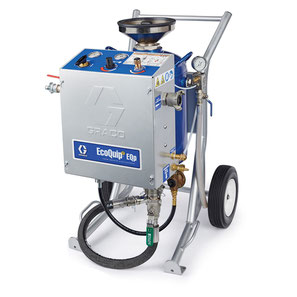ULTRA SONICS MMM Technologies :
MMM : Multimode, Multi-frequency, Sound Wave Modulation and Ultrasonic Wave Modulation
Remove fixed contamination only with water?
Decontaminating a pipe by clamping flanges external to the pipe?
- To keep the piping system clean (liquid or gas transfer) during operation (preventive maintance)?
- To carry out a curative maintenance operation ?
BI-FLUID (air-water)
Efficient decontamination with only 10l/h of generated effluent?
ZELUP has developed a spraying device that combines a very low water flow rate with an air flow rate that transmits kinetic energy to the micro-droplets, which allows efficient cleaning with only
10 l/h of effluent.
And the equipment becomes a foam gun if you add a static foisoneur type nozzle.

SANDBLASTING
- Carry out a sandblasting operation while reducing 92% of dust emissions compared to conventional equipment without hooding?
- Use high-performance equipment that halves the consumption of abrasives?


NOZZLE FOR SUCKING UP FINE PARTICLES
How to intervene in cramped, hard-to-reach areas to remove contamination by a dry process?
A startup DUSTY BRUSH in Switzerland has developed a nozzle made of flexible multi straws.
The electrodecontamination process is very effective for labile or fixed contamination
This is a process for both maintenance or dismantling operations.
Materials which do not conduct electricity are excluded from this type of process.
Indeed, the electrodecontamination process has existed for several decades and has proven its effectiveness during multiple decontamination operations. However, its application was limited because the electrode used, was made of hard material (stainless steel, graphite) and it was mandatory to use a smear between the metal to be decontaminated and the electrode. Due to the rigid shape of the electrode, it was impossible to use this process on complex surfaces (corners, threads, rack...)
This is simply connected to any cleaning device . A voltage sensor measures the cleaning energy – and the servo pump doses exactly the right amount of electrolyte, which is then delivered via the hose system and AutoFeed handle directly into the carbon fibre brush.
As soon as the brush is lifted off the workpiece, the electrolyte supply stops ; with a back pump that prevents dripping.
REUTER, a German company markets different equipment and has developed multiple accessories (multiple brushes, brush for piping, telescopic broom) to adapt the process to the geometry of the parts to be cleaned.
Carbon fibres are excellent conductors The fibres of the carbon fibre brush hug the shape of the work piece during the cleaning process; different brush sizes, shapes and types make any cleaning task easier. Flexible extension of fibres from a Teflon sliding sheath can be used to reach corners and gaps. And patented in-pipe brushes allow pipes and holes to be cleaned from the inside..
- Using the brush previously dipped in an electrolyte, you can dissolve the oxide layer and erode the
base metal.
- Depending on the electrolyte chosen, you can improve the final surface by reducing the roughness (Ra) and thus reduce the risk of subsequent contamination.
It was in Australia in 2009 that the first brush system was developed, comprising several hundred thousand carbon fibers to remove traces of oxidation after welding operations.












